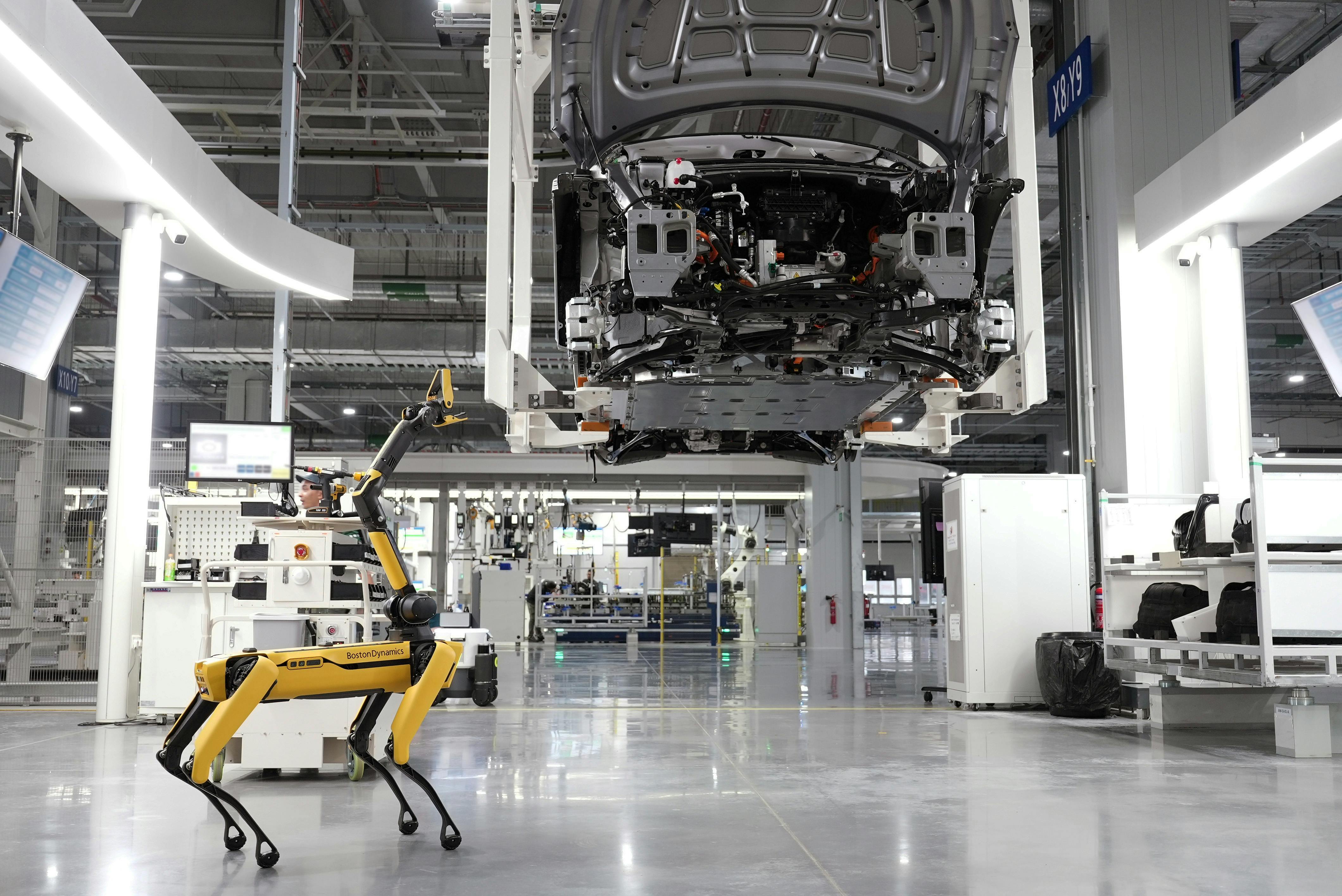The Power of AI in Manufacturing
Artificial intelligence (AI) is revolutionising the manufacturing industry by improving efficiency, reducing costs, and enhancing product quality. At Isotta Prime Global Artificial Intelligence Fund, we recognise the transformative potential of AI in manufacturing and are committed to investing in cutting-edge AI-driven solutions. This article explores the key AI technologies driving this transformation and the investment opportunities they present.

AI in Product Optimisation
AI optimizes production processes by analysing data from sensors, machines, and production lines. Machine learning algorithms provide actionable insights to help manufacturers reduce downtime, increase efficiency, and maintain product quality.
Key Applications:
- Predictive Maintenance: AI-powered systems predict equipment failures, reducing unplanned downtime and maintenance costs.
- Process Optimisation: AI identifies inefficiencies in production, improving efficiency and minimising waste.
- Quality Control: AI algorithms inspect products in real-time, enhancing quality assurance and reducing rework costs.
AI in supply Chain
management
AI enhances supply chain management by improving demand forecasting,
inventory management, and logistics. Machine learning models analyse data from
various sources to enhance efficiency and reduce costs.
Key Applications:
- Demand Forecasting: AI predicts demand based on historical and external data, optimizing inventory levels.
- Inventory Management: AI monitors inventory and recommends replenishment strategies, improving production timelines.
- Logistics Optimization: AI streamlines transportation, cutting costs and delivery times while improving customer satisfaction.
AI in Product Design
and Development
AI accelerates product design and development by providing insights into
customer preferences, market trends, and product performance. Machine learning
models analyse data from various sources to inform design decisions and
optimise product features.
Key Applications:
- Customer Insights: Artificial intelligence (AI) analyses customer feedback, sales data, and market trends to uncover preferences and product needs. This enables manufacturers to design products tailored to customer expectations and evolving market demands.
- Simulation and Testing: AI-powered models simulate product performance and evaluate multiple design iterations, significantly reducing the time and cost associated with traditional physical prototyping. This accelerates the product development process.
Innovation: AI algorithms analyse patent databases, research papers, and market data to identify emerging technologies and innovation opportunities. By leveraging AI, manufacturers stay competitive and drive continuous product innovation.
aI In Workforce Management
AI enhances workforce management by optimising scheduling, training, and
resource allocation. Machine learning models analyse workforce data to improve
productivity, reduce labor costs, and enhance employee satisfaction.
Key Applications:
- Scheduling Optimisation: AI systems optimise workforce schedules based on demand patterns, employee availability, and skill levels. This ensures that the right employees are available at the right time, improving productivity and reducing labor costs.
- Training and Development: AI models analyze employee performance and identify training needs. This helps manufacturers provide targeted training programs that enhance skills and improve performance.
- Resource Allocation: AI algorithms optimize resource allocation, ensuring that employees, machines, and materials are used efficiently. This reduces waste and enhances overall productivity.
The information in this article is prepared by Isotta Prime Pty Ltd (ACN 664 008 824). It is general in nature as it has been prepared without taking account of your objectives, financial situation or needs.
Further Isotta
Find more blogs written by Isotta that are similar

Investing
Regulating the Future: The Evolving Landscape of AI Compliance

Isotta Prime

Investing
Regulating the Future: The Evolving Landscape of AI Compliance




